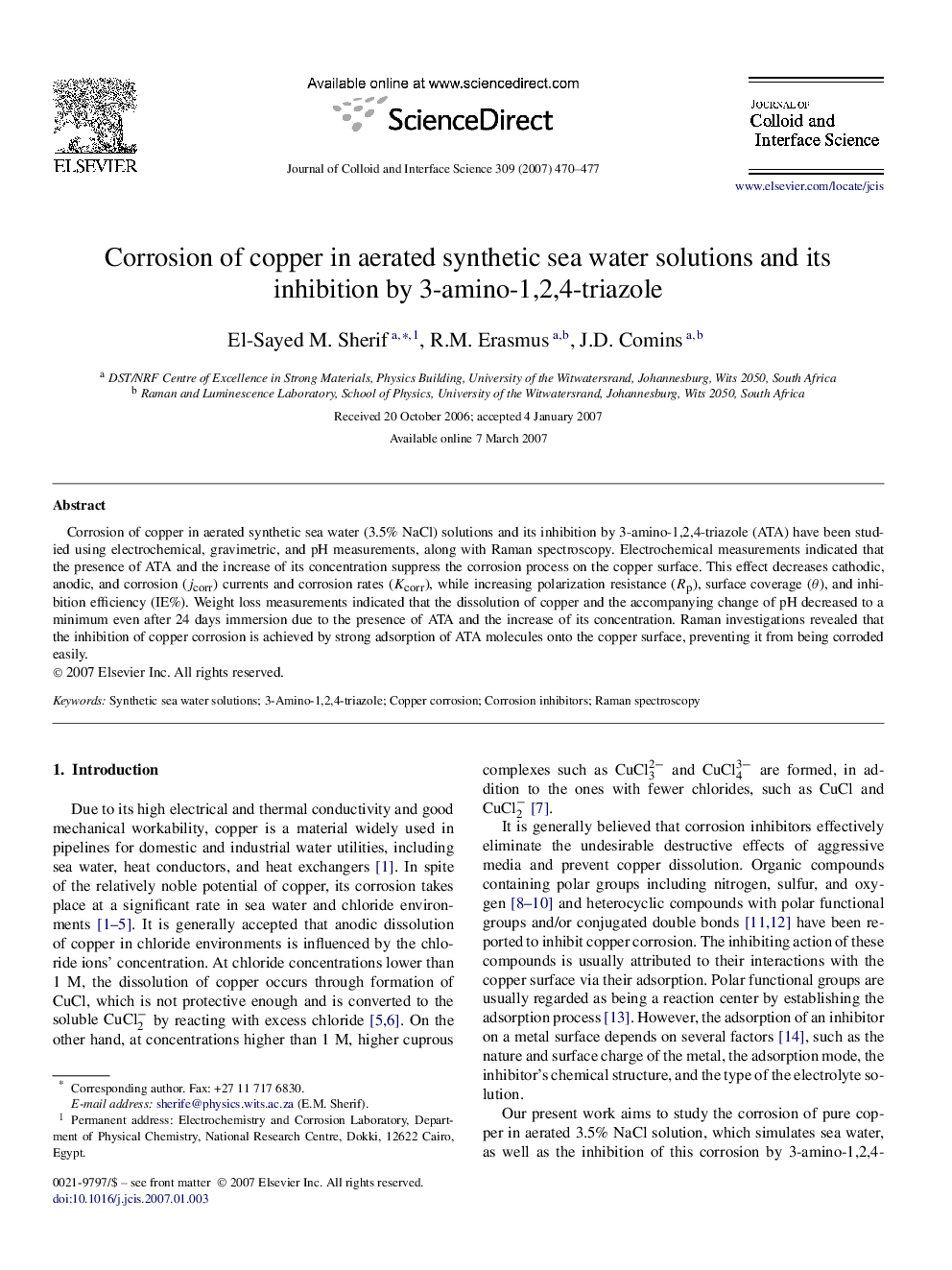| Article ID | Journal | Published Year | Pages | File Type |
|---|---|---|---|---|
| 612382 | Journal of Colloid and Interface Science | 2007 | 8 Pages |
Corrosion of copper in aerated synthetic sea water (3.5% NaCl) solutions and its inhibition by 3-amino-1,2,4-triazole (ATA) have been studied using electrochemical, gravimetric, and pH measurements, along with Raman spectroscopy. Electrochemical measurements indicated that the presence of ATA and the increase of its concentration suppress the corrosion process on the copper surface. This effect decreases cathodic, anodic, and corrosion (jcorrjcorr) currents and corrosion rates (KcorrKcorr), while increasing polarization resistance (RpRp), surface coverage (θ), and inhibition efficiency (IE%). Weight loss measurements indicated that the dissolution of copper and the accompanying change of pH decreased to a minimum even after 24 days immersion due to the presence of ATA and the increase of its concentration. Raman investigations revealed that the inhibition of copper corrosion is achieved by strong adsorption of ATA molecules onto the copper surface, preventing it from being corroded easily.
Graphical abstractIt is clearly seen that the increase of the immersion time of Cu from 0 (Fig. a) to 50 h (Fig. b) in sea water alone (curves 1) and in the presence of 0.5 (curves 2) and 1.0 mM 3-amino-1,2,4-triazole (curves 3) significantly decreased the cathodic, corrosion, and anodic currents.Figure optionsDownload full-size imageDownload as PowerPoint slide
